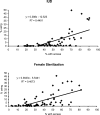Access to contraceptive methods and prevalence of use
- PMID: 23151399
- PMCID: PMC3785174
- DOI: 10.1017/S0021932012000715
Access to contraceptive methods and prevalence of use
Abstract
Survey data on contraceptive use for about 80 countries are related to measures of contraceptive access, by method, from 1999 to 2009. Cross-tabulation and correlational methods are employed, with geographic comparisons and time trends. Total prevalence of use for five modern contraceptive methods correlates well to a variety of access measures. Greater access is also accompanied by a better balance among methods for both access and use. Sub-Saharan African countries show similar patterns though at lower levels. Improved access to multiple methods is consistently associated with higher levels of contraceptive use.
Figures






References
-
- Bulatao R. A., Palmore A. & Ward S. E. (eds) (1989) Choosing a Contraceptive: Method Choice in Asia and the United States. Westview Press
-
- Chamratrithirong A. & Kamnuansilpa P. (1984) How family planning availability affects contraceptive use: the case of Thailand In Ross J. & McNamara R. (eds) Survey Analysis for the Guidance of Family Planning Programs. Center for Population and Family Health, Columbia University, New York, pp. 219–235
-
- Chao D. N. W., Gupta Y. P., Stover J. & Talwar P. P. (1994) Using age-specific appropriate method-mix strategy to achieve replacement level fertility in India: a model for policy analysis. Demography India 23(1 & 2), 157–166
-
- Choe M. K. & Bulatao R. A. (1992) Defining an appropriate contraceptive method mix to meet fertility preferences. Presentation at the Annual Meeting of the Population Association of America.
-
- Darroch J. E., Sedgh G. & Ball H. (2011) Contraceptive Technologies: Responding to Women's Needs. Guttmacher Institute, New York, p. 51
Publication types
MeSH terms
LinkOut - more resources
Full Text Sources
Other Literature Sources

